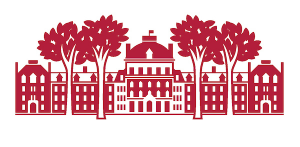- Teacher: Wol A Kang
- Teacher: Kirsten Speidel
- Teacher: Benjamin Ridgway
- Teacher: Jiajia Wang
- Teacher: Min Wang
CHIN011 Advanced Chinese is designed to enhance students’ Chinese language ability at the Advanced level. Students are expected to master more advanced-level vocabulary, structures and expressions through selected topics related to the 21st-century Chinese society and culture. With a gradually increased load of readings, students will also improve their skills in reading and writing at the Advanced level.
Classroom: 301 Lang’s Performance Center
Tuesdays & Thursdays, 11:20-12:35PM Office: 305 KOHL
Office hours: Tuesdays (3:30-5PM) and Wednesdays (3:30-5PM) (but email to confirm) and by appointment
pxu1@swarthmore.edu
610-690-6831
Classroom: 301 Lang’s Performance Center
Tuesdays & Thursdays, 11:20-12:35PM Office: 305 KOHL
Office hours: Tuesdays (3:30-5PM) and Wednesdays (3:30-5PM) (but email to confirm) and by appointment
pxu1@swarthmore.edu
610-690-6831
- Teacher: Benjamin Ridgway
- Teacher: Peng Xu
This is a service-learning course. Students are required to provide community service to our neighboring immigrant community—Philadelphia’s Chinatown—through an internship with the Philadelphia Chinatown Development Corporation (PCDC) in order to gain a deeper understanding of the Asian American diaspora and their social issues in the context of contemporary global migration. Besides the mandatory community-based service (a minimum of 3 hours per week, excluding transportation time), students will also read academic literature, keep an internship journal and write reflection papers to integrate their learning experience both inside and outside the classroom. The outcome project for this course is to build a digital archive, with the help from our college librarians and ITS staff, to document the community, individual immigrants and residents, social activities and changes round Philadelphia Chinatown. The working language in PCDC office is English, but knowledge of Mandarin or regional dialects is a plus for working with the Chinese American community.
- Teacher: Jiajia Wang
This course challenges the stereotype of martial arts as a timeless tradition and unified code by examining it across a wide range of genres in the “premodern” period (from classical periods to the late Qing dynasty). Our objects of study will include biographies from the early histories, classical tales, novels and theater. The course follows a chronological order, beginning with the philosophical roots of and aristocratic involvement in the tradition in earlier centuries and ending with the resurgence of interest in chivalric tales and martial scenes onstage in late Qing China. Within this chronological structure, we take a dual perspective, meaning we will examine the martial arts tradition as, one, represented in literary sources, and two, performed in and trained for traditional Chinese theater. Issues to be considered will include the representation of violence, the politics of representation, the gendering of power, Chinese masculinity, and the relationship of martial arts to dance, visual arts, music and theater. Prerequisite: None.
- Teacher: Peng Xu
